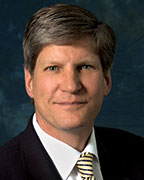
The Road to Ulan Bator
ASTM International's Partnerships Worldwide
I n 1972, when I first came to ASTM, inclusion was very much on everybody's mind. It was believed that anyone "interested in or affected by" the outcome of a standard should be part of its development. Back then, active participation meant that technical experts had to be physically present at technical committee meetings, but there were people, like those in consumer groups and small businesses, who couldn't afford the travel expenses. For them, meetings in cities like San Francisco and Chicago might as well have been held in Timbuktu.
ASTM decided to help. And with help those representatives came to technical committee meetings, bringing their needs and desires with them, which provided fuller consensus and produced more relevant standards. In 1972, there was no World Trade Organization, no Agreement on Technical Barriers to Trade and no guidelines for the development of international standards. ASTM, however, was operating under the principles of inclusion, assistance, consensus, openness and relevance, terms that would not be institutionalized in a world body for 23 more years.
By the time the WTO was established in 1995, ASTM International standards had already become globally significant trading capital. Under WTO rules, international standards had to be good actors in the technical regulations that controlled trade, i.e., they could not create barriers to trade. In 2000, the WTO/TBT Committee issued guidelines - principles for the development of international standards for technical regulations. ASTM International was already operating under five of the six principles.1 A year later, it decided to embrace the sixth fully and formally by instituting its Memorandum of Understanding Program.
The sixth principle is the development dimension, the principle of inclusion. It declares that those who find participation in the development of international standards prohibitive should be helped. It is the same ASTM International principle of inclusion, expanded to developing nations.
The ASTM MOU Program creates a formal relationship between ASTM International and national standards bodies worldwide.2 Besides offering membership and the benefits of membership, ASTM International hosts standards professionals from MOU countries at its headquarters for approximately a month under its Standards Expert Program. ASTM International also sponsors visits by staff members of MOU standards bodies, where they gain insight into the structure and operations of ASTM's committees and the standards development process. This year also marks the beginning of the MOU Technical Visitor Grant Program, which will expose technical experts to standards-related information and activities in a given sector of the expert's choice. The program is intended to aid the equivalent sector or economy in the visitor's nation by expanding technical fluency in the selected subject.
Individuals who join via our MOU partners are full members who participate in virtual meetings and submit ballots electronically. Often, one or two will be just down the hall at ASTM headquarters as part of these exchange programs, learning what it is like to be a part of the ASTM International management team. Others will have returned home, still absorbing the excitement of a committee week.
ASTM International currently has 77 MOUs with individual countries and three regional organizations, a testament to the value of ASTM standards and the desire of people around the world to be a part of the ASTM International community. There are 250 members from MOU countries on Committee D02 on Petroleum Products and Lubricants alone, and 737 ASTM standards in the petroleum area have been cited by 64 MOU signatories. Sixty-three MOU signatories have cited 1,749 ASTM infrastructure standards and there are 912 members participating on infrastructure-related committees from 72 MOU nations.
These facts are only the tip of the MOU iceberg. The daily interaction with MOU partners can't be described in one article, and the program's impact is so far-reaching that it is difficult to assess in mere numbers. But this we know for sure: It has increased ASTM's international membership and the use of ASTM standards in MOU countries and in their trading partners. In all of the MOU countries, the ASTM International model of standards development is better understood, including the concept of government and private-sector equality. The empowerment derived from direct participation in the development of international standards is being realized by MOU technical experts for the first time. These are the people who will be driving forces behind the development of their economies, and that has got to be thrilling. We all win here.
Today, as I sit in my office in West Conshohocken, I am thinking about Ulan Bator, the capital of Mongolia, where the Mongolian Agency for Standardization and Metrology, an ASTM MOU partner, is located. Sitting high above sea level where the Trans-Siberian Railway connects with the Chinese rail system, Ulan Bator is, for me, the symbol of a remarkable journey and of the possibilities that still lie ahead for ASTM International. Today, ASTM is broader, richer and stronger for its MOU partners. ASTM standards are used in more countries now than at any time in its history, and it has grown in directions that were, until now, unforeseen and unknown. In 1972, no one even dreamed that there was a road from ASTM to Ulan Bator.
References
1. World Trade Organization principles for the development of international standards are transparency, openness, impartiality and consensus, effectiveness and relevance, coherence, and development dimension.
2. See www.astm.org/GLOBAL.
James A. Thomas
President, ASTM International
 SN Home
SN Home Archive
Archive Advertisers
Advertisers Masthead
Masthead RateCard
RateCard Subscribe
Subscribe Email Editor
Email Editor